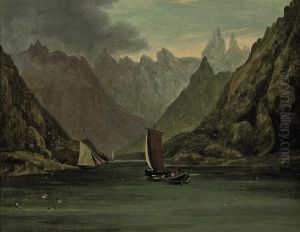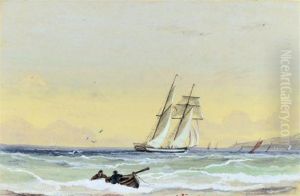Charles Walters D' Oyly Paintings
Charles D'Oyly was born on September 1781 in Murshidabad, India, to an English family. His father, Sir John Hadley D'Oyly, 7th Baronet, was a prominent figure in the British East India Company. D'Oyly was educated in England but returned to India in 1797 to begin his own career with the East India Company. Over the years, he rose to significant administrative positions, including the post of Collector of Dacca (now Dhaka, Bangladesh).
While D'Oyly's official career was notable, he is best remembered for his artistic work. He was a prolific artist and became an important figure in the development of British amateur art in India. D'Oyly was particularly adept at lithography, a printmaking technique that was relatively new at the time, and he produced numerous sketches and paintings of Indian landscapes and scenes of daily life that provide a valuable record of the era.
D'Oyly's art was characterized by a keen observation of his surroundings, combined with a gentle satirical humor. He had a unique ability to capture the essence of the landscapes and the people of India with a blend of affection and critique. His best-known work is perhaps the series of views of Calcutta, which he produced together with the famous British artist James Baillie Fraser. This series was published in the early 19th century and enjoyed considerable popularity, offering a glimpse into the life of the British Raj.
In addition to his art, D'Oyly also served as the patron of a number of Indian artists and was instrumental in setting up the Government School of Art in Calcutta. This institution played a significant role in fostering art education in India during the British colonial period.
Charles D'Oyly died on 21 September 1845 in Italy while on a trip to Europe. His legacy lives on through his extensive body of work, which continues to be appreciated by art historians and collectors. His contributions to Indian art, particularly through his encouragement and support of local artists, have also been acknowledged as an important part of his impact on the cultural landscape of colonial India.

